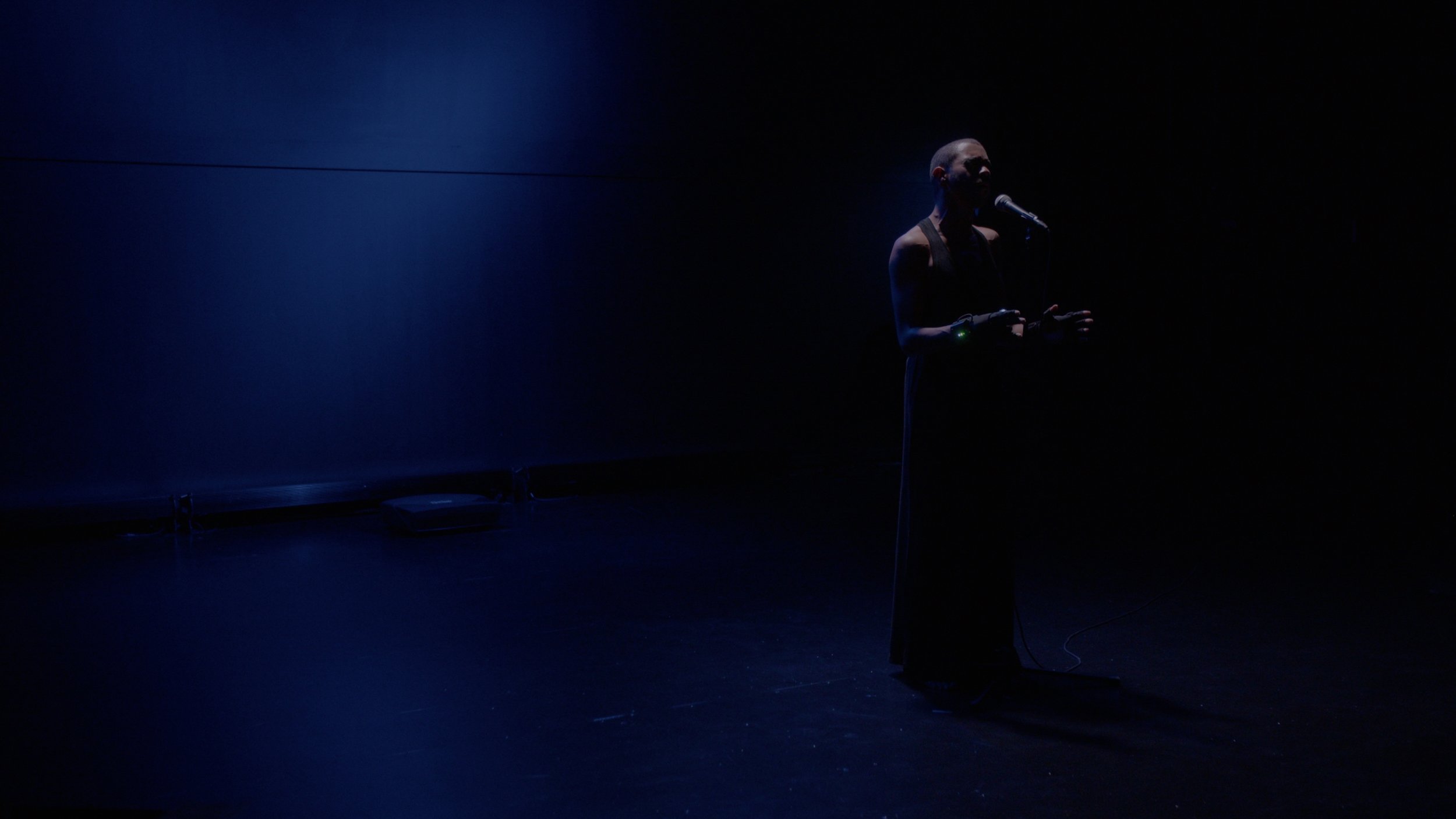An energetic field. Ancient tools and future transmissions. A kinetic signal disruption.
(a)temporalities
Step into a room and watch nothing happen. For five minutes. Then ten. Fifteen. The air is thick with not-knowing. Trained on crescendos and plotlines, the brain starts to squirm. Shoulders creep up. The quiet isn’t empty, it’s confrontational. Like standing still in a forest long enough to feel it notice you.
Our bodies crave momentum, explanation, proof of movement, but (a)temporalities offers none of that. It doesn't perform for you, it waits. It stretches time like gauze, like memory, like the feeling of being watched by someone who isn’t there. The audience witnesses what happens when the voice forgets who it belongs to, as it emerges not from the mouth but from something deeper, something cracked, half-formed, beyond the limbic.
This is a piece about forgetting: the body, the room, the self. Movement is slow, loose, and devotional, making each shift in posture feel like a tectonic decision. The voice changes: sometimes full, sometimes breaking into breath, into whimper, into something not meant for language.
There is no narrative or urgency; only presence. This isn’t duration for endurance, it’s duration as invitation. The work holds us at the edge of comfort, like a hand hovering over heat.
(a)temporalities is performance-as-altered state. Not a mirror, not a lesson, but a field.
TechniTerra
TechniTerra is a ceremonial interface between ancient tools and future transmissions. Wooden bowls embedded with time-of-flight sensors become bodily resonators. As hands hover above them, modulated sine tones tremble outward from spatialized speakers, colliding to form monaural beats. Proximity becomes volume. Distance becomes pitch. The instruments, built with Arduino and Max MSP, generate not just sound but a living acoustic weather system.
This is a performance that listens back. One performer reaches toward a bowl, and the space breathes in; each gesture is answered with tone. Another performer depresses a button to lock a sonic state in place, allowing the frequencies to hover like held breath. Each interaction is an act of tuning and attunement.
TechniTerra unfolds without urgency. The only tempo is that of emergence. There is no score, only protocol. There is no choreography, only relation. Here, the body is an antenna.
The piece dissolves genre, carrying the durational patience of sound installation, the mystery of experimental theater, and the undercurrent of something much older than either of them.
When the sound recedes and the performers leave, what remains is not silence, not emptiness, but saturation, and a message.
What I Couldn’t Say Out Loud
What I Couldn’t Say Out Loud is a kinetic signal disruption: fractured falsetto meets vocal fry, a piano swells with unspoken wounds, columns ache with shadow, light becomes weather, and bodies move with the force of undoing. This multidisciplinary piece was written for voice, piano, and light. The performers trade roles, navigating shifting relationships of voice, silence, movement, and presence. Time is stretched, beginning with whispers and poems, proceeding through solos and duets, and ending with collective sounding. Nothing repeats. Everything is connected.
Technically, the work flirts with theater and evades it. It unfolds over 50 minutes, rooted in durational performance practices and minimalist aesthetics, where absence carries material weight. The structure is composed through a light score, sequenced via Beam for Ableton Live. Sound is treated like gravity as it molds, stretches, and breaks. Every tone is seeded frequency. Every gesture is encoded data.
One collaborator described the experience as “extremely spiritual and gratifying... connected with the source of creative energy.” Another said, “the whole experience, rehearsal and performance, felt like one cohesive experience… we kept deepening the practice, and the performance was part of that same process… it felt beautiful. It felt cohesive. It was an artistic experience in and of itself."
Visceral, intuitive, and utterly alive, this piece is a haptic sonic attunement, turning slowness and vulnerability into architectural prayer.



